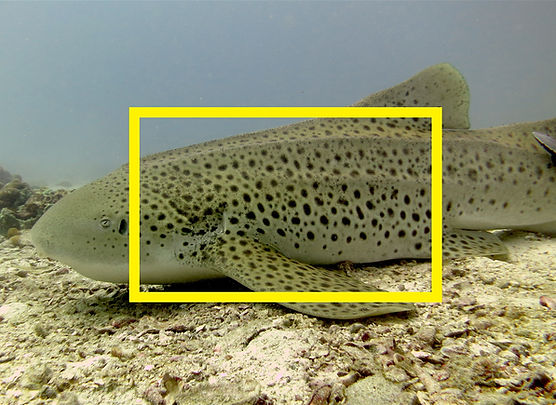INTERNATIONAL ZEBRA SHARK
PHOTO ID CITIZEN SCIENCE RESEARCH
The Zebra Shark Project is a citizen science initiative that uses photo identification to support the study and protection of zebra sharks. Divers and snorkelers can take part by submitting photographs that capture the unique spot patterns and any distinctive marks on these fascinating and often elusive sharks. Each image helps researchers identify individual zebra sharks, enabling long-term tracking of their movements, behaviors, and population changes.
Zebra sharks are listed as Endangered on the IUCN Red List, with populations declining due to habitat loss, overfishing, and human disturbance. By contributing your photos to this project, you’re helping build a valuable database for mark-recapture research and population modeling. This information plays a crucial role in conservation planning at local, regional, and global levels—informing marine protection efforts and helping ensure the survival of this unique species.
24,311
Identified sharks
132,075
Reported sightings
132,075
Citizen scientists
443
Researchers & Volunteers
HOW TO CONTRIBUTE TO ZEBRA SHARK RESEARCH
Follow these 4 simple steps to help identify and protect Zebra sharks

STEP 1: Following these guidelines during observations and while taking Zebra shark ID photos.
DO:
-
Approach calmly and slowly, maintaining good buoyancy control at all times.
-
Always approach from the left side of the shark, never head-on.
-
Stay at least 3 5 meters away from the shark, especially when taking ID photos.
-
Be respectful of other divers and limit your interaction to 5 minutes if other groups are waiting.
-
Avoid using excessive flash when taking photographs.

STEP 2: Take position and take the ID photo
-
Photograph the LEFT side of the Zebra shark.
-
Ensure the image includes part of the pectoral fin and the first dorsal fin.
-
Take the photo horizontally and as level as possible.
-
Avoid any other fish (e.g., remoras) between the shark and the camera.
-
If possible, identify the shark’s sex (males have claspers near the pelvic fins).

STEP 3: Capture distinctive features
-
Photograph any unique scars, markings, or injuries that could help distinguish this whale shark from others.
-
These features are important for long-term identification and tracking.
-
Focus on visible features such as notches on fins, bite marks, or unusual color patterns.
-
Take close-up shots of distinctive areas if the shark’s behavior allows safe observation.
-
If the shark has a tag or tag scar, be sure to include it in your photos.

STEP 4: Record and submit your sighting
-
Note the date and location (GPS coordinates or dive/snorkel site name) of your whale shark encounter.
-
Submit your photos and observations to the international database.
-
Include any additional notes about the shark’s behavior (e.g., feeding, cruising, diving).
-
Mention estimated size and sex, if observed, to assist with data accuracy.
-
Indicate if there were other sharks present or notable environmental conditions (e.g., visibility, currents).

